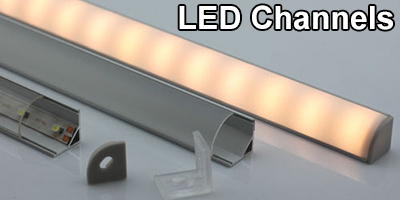You are using an out of date browser. It may not display this or other websites correctly.
You should upgrade or use an alternative browser.
You should upgrade or use an alternative browser.
Spectrographic analyses, pg. 2
- Thread starter The_LED_Museum
- Start date
 Help Support Candle Power Flashlight Forum
Help Support Candle Power Flashlight Forum
- Status
- Not open for further replies.
The_LED_Museum
*Retired*

Spectrometer plot of a later sample (10-06-07) of a Fox Group 350nm UV LED.
That hump near 695nm in the deep red region of the spectrum appears to be LED emission itself, rather than a detector sensitivity issue; but I've only had the spectrometer online for less than 24 hours, so I could very well be incorrect here.
The_LED_Museum
*Retired*

Spectrometer plot of a later sample (10-06-07) of a Fox Group 360nm UV LED.
Note the LED's spectral line halfwidth is unusually narrow for an LED; looks like less than 20nm to me.
That hump near 720nm in the very deep red region of the spectrum appears to be LED emission itself, rather than a detector sensitivity issue; but I've only had the spectrometer online for less than 24 hours, so I could very well be incorrect here.
Last edited:
The_LED_Museum
*Retired*

Spectrometer plot of a Fox Group 5.5mm UV LED.
Note the LED's spectral line halfwidth is unusually narrow for an LED; looks like less than 15nm to me.
That hump near 715nm in the very deep red region of the spectrum appears to be LED emission itself, rather than a detector sensitivity issue; but I've only had the spectrometer online for less than two days, so I could very well be incorrect here.
Rise and shine CPF! It's 0501 hours! Early bird gets the gagh!
The_LED_Museum
*Retired*

Spectrometer plot of the LED in an Inova X03 Flashlight.
And remember, the early bird that hesitates gets wormed!
The_LED_Museum
*Retired*

Spectrometer plot of the bulbs in the Spider Web Lights.
Rise and shine CPF! It's 0518 hours! Early bird gets the gagh!
The_LED_Museum
*Retired*

Spectrometer plot of the halogen bulb in a desk lamp.
And remember, the early bird that hesitates gets wormed!
The_LED_Museum
*Retired*

Spectrometer plot of a Stanley NR4004X red LED, when driven at 19.28mA.
The_LED_Museum
*Retired*

Spectrometer plot of an Active # 13287 NIR LED.
{computer alarm/beeping noises} {female computer voice} 0411 hours. Warning! Regeneration cycle incomplete!
The_LED_Museum
*Retired*

Spectrographic analysis of an Active GIUMY02312 red LED, when driven at 19.28mA.
Rise and shine CPF! It's 0412 hours! Early bird gets the gagh!
The_LED_Museum
*Retired*

Spectrographic analysis of a Fighter Tiny Stainless Steel Cree 2-Mode LED Flashlight
{computer alarm/beeping noises} {female computer voice} 0412 hours. Warning! Regeneration cycle incomplete!
The_LED_Museum
*Retired*

Spectrographic analysis of the red LEDs in the LED ''SIGNS'' Sign.
{computer alarm/beeping noises} {female computer voice} 0432 hours. Warning! Regeneration cycle incomplete!
The_LED_Museum
*Retired*

Spectrographic analysis of the yellow LEDs in the LED ''SIGNS'' Sign.
Rise and shine CPF! It's 0433 hours! Early bird gets the gagh!
The_LED_Museum
*Retired*

Spectrographic analysis of the green LEDs in the LED ''SIGNS'' Sign.
{computer alarm/beeping noises} {female computer voice} 0433 hours. Warning! Regeneration cycle incomplete!
The_LED_Museum
*Retired*

Spectrographic analysis of the blue LEDs in the LED ''SIGNS'' Sign.
Rise and shine CPF! It's 0434 hours! Early bird gets the gagh!
The_LED_Museum
*Retired*

Spectrographic analysis of the purple LEDs in the LED ''SIGNS'' Sign.
{computer alarm/beeping noises} {female computer voice} 0434 hours. Warning! Regeneration cycle incomplete!
hank
Flashlight Enthusiast
> light consists of a ~460nm blue native LED band
> and a ~635nm red phosphor band.
Without looking it up, I'd guess that's pretty close to what plants use for photosynthesis and maybe these are surplus from some such use. Nice bimodal distribution.
> and a ~635nm red phosphor band.
Without looking it up, I'd guess that's pretty close to what plants use for photosynthesis and maybe these are surplus from some such use. Nice bimodal distribution.
The_LED_Museum
*Retired*
The LEDs do have a pinkish-purple tint to them, not at all unlike those "Grow Lux" fluorescent light bulbs sold as grow lights.
The_LED_Museum
*Retired*

Spectrographic analysis of the red LED in the Analogue Dragon LED Driver HPLS36-AP750.
{computer alarm/beeping noises} {female computer voice} 0437 hours. Warning! Regeneration cycle incomplete!
The_LED_Museum
*Retired*

Spectrographic analysis of the blue LED in the Analogue Dragon LED Driver HPLS36-AP750.
{computer alarm/beeping noises} {female computer voice} 0438 hours. Warning! Regeneration cycle incomplete!
- Status
- Not open for further replies.
Similar threads
- Replies
- 0
- Views
- 1K
